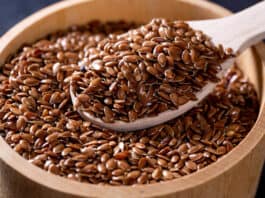
Recover after fasting
I had a short period of fasting. But without going into the details of individual spiritual beliefs, fasting is an intelligent method of maintaining health and pH regulation, altered by food excesses and especially by animal proteins and fats.

I think you’ve gladly noticed that when we hold fast, the first visible benefit is the disappearance of cellulite,as well as a brighter skin and complexion. I looked to see if there was a scientific explanation here, and I found that in fact, water retention that also accentuates cellulite is generated by the need to dilute the excess protein, which exists at the intracellular level, especially that derived from animal feed. This creates an acid residue that needs to be neutralized.
When the alkaline minerals necessary for this neutralization process are not available in the body to carry out this elimination operation, the body uses this second option: that of diluting the acid residue by accumulating fluids in the body. Therefore, fasting helps us a lot to regulate these purification mechanisms at the intracellular level.
A balanced diet
Ideally, we should keep as much of the good effects accumulated during this period as possible. When our digestive system recovers from its usual activity, the desire to eat will be intense. Then the will, discipline and self-control acquired during the fasting period must intervene.

In the first week after fasting, in addition to the quantities of vegetables, cereals and raw fruit, lighter proteins such as skimmed milk will be added, and every two days, in the morning at breakfast add 1 egg. Yogurt, kefir and sana are healthy foods that can be safely introduced into your daily diet.
As far as meat is concerned, it should not be eaten daily immediately after fasting, but alternated with fish,mushrooms, lentils, beans, chickpeas or peas. If disturbances occur during the period of return from fasting, we resume 1-2 days fasting, after which we return to the diet specific to the return period.
How we choose meat
We choose lean meat, which we can cook easily, preferably in the form of soups or dishes in which vegetables abound: baked chicken roll, spinach with meat, poultry thistle. The new accumulated toxins will thus be more easily eliminated due to the effect of fibers in the vegetables. In addition, if the digestive system has less work to do, we will have even more energy.
It is good to eat slowly and chew food very well to get the most out of the effects of enzymes in saliva, which helps digestion: 80% of starch, 30% of protein and 10% of fats can be digested by saliva enzymes.

After fasting, the body is now clean, the pH becomes alkaline and the immune system is reinvigorated. This is why the perception of unhealthy food is also increased: we immediately notice what food is full of toxins by the sensations that occur or by the recurrence of “forgotten” symptoms: acne, migraines, fatigue.
If, however, the olfactory and taste intuition and senses do not help us, it is good to avoid excess fat, cold cuts, roasts, overprocessed products, hydrogenated fats, fast food products, stews, organs during this period. Too rich a meal can cause nausea, headaches and a state of weakness. So moderation in all and a balanced diet! Good health!



